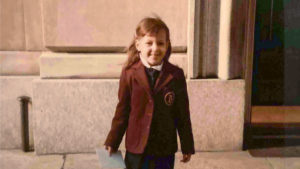When teaching freshman composition in New York colleges in the mid-Eighties, I picked up a peculiar pattern in one-on-one conferences with my female students. With improbable frequency, they’d confide that they were anorexic. The term had only entered the popular lexicon about 10 years earlier, and public awareness of the perturbing derangement had been given a huge boost by the pop singer Karen Carpenter’s death in 1983. Yet not all these 18-year-old students were disturbingly underweight. It took me a minute to get it. They aspired to be anorexic. Anorexia was a prestige diagnosis.
While some of those students may have been merely flirting with the condition, they were canaries in a very dark coal mine. All too many of their peers were undertaking life-threatening calorie restriction in great earnest. Anorexia was already known to be the very deadliest of all psychiatric ailments. (Wanting to be anorexic, then, is like pining to contract necrosis.) In the Nineties, my natural ghoulish voyeurism inspired me to read several books about obsessive self-starvation, the best of which was Jenefer Shute’s harrowing novel Life Size.
So surely this month I jumped at the chance to read Hadley Freeman’s Good Girls: A Story and Study of Anorexia? Beginning in 1992, the columnist struggled for many years with the eating disorder, for which she was repeatedly hospitalised for months on end. Yet before diving into what proved a compelling and forthright memoir, I resisted. Honestly? The topic felt dated. Because as a prestige diagnosis, anorexia has been replaced. With trans.
Although Freeman spends half a chapter on the overlap between the two afflictions — both are “rooted in the belief that if you change your body, you will no longer hate yourself” — throughout her account I began to notice other intersections.
Both neuroses are clearly communicable. Ever since a preoccupation with thinness took off in the Sixties, eating disorders have soared, making the more recent insistence that anorexia is more of a heritable genetic proclivity than a cultural contagion dubious. From the Seventies onwards, an accelerating number of young women have got the idea to express their discontent through debilitating hunger from lavish media coverage, and one another. In kind, since 2010 the number of teenage girls referred to the Tavistock Gender Identity Development Service increased by 5,000% — making claims of a purely genetic explanation equally iffy. Both these afflictions are social confections. Although tales of people who starved themselves or passed for the opposite sex exist in the historical record, eating disorders and transgenderism on a mass scale are recent inventions. Collectively, we made these dire maladies up.
Freeman identifies her “trigger” at 14 for dropping an alarming amount of weight as a single moment. Sitting beside a prominently bony classmate in gym class, Freeman asked, “Is it hard to buy clothes when you’re so small?” “Yeah,” the girl replied. “I wish I was normal like you.”
“A black tunnel yawned open inside me,” Freeman writes, “and I tumbled down it, Alice into Nowhereland. ‘Normal.’ Not ‘slim’, not ‘thin’—‘normal’. Normal was average. Normal was boring. Normal was nothing.”
Nowadays, there’s ostensibly no such thing as a norm. In Left-wing jargon, the clunky “norm” words — such as “cis-heteronormative” — are pejorative. A fifth of Americans under 30 identify as LGBT-whatever. Never mind that Eric Kaufmann has documented the large proportion of supposedly bisexual young women who don’t engage in actual same-sex coupling; today’s young people adopt the label of sexual atypicality the way earlier generations wore crocodile-logoed Lacoste shirts. As Freeman notes, normal is “nothing”. Not only heterosexuality but, increasingly, contentment with your natal sex is uncool. According to the report, 12% of millennials identify as either transgender or gender-nonconforming, compared to 6% in Generation X.
Both self-starvation and transgenderism guarantee elevation to a perceived social elite. At least in the minds of some anorexics, being immune to the temptations of crisps and biscuits that seduce mere mortals induces an emotionally nutritious sensation of superiority. Freeman portrays her fellow sufferers in hospital as competitive with one another over who eats less, as well as picky about how grimly skeletal one must become to qualify for admission to their rarefied circle; the same rivalry is readily located online. Public slow-motion suicide inevitably secures outsize attention from terrified parents, worried teachers and concerned physicians. (Freeman claims that anorexics don’t aim to look thin; they aim to look ill.) With its plethora of frenetic exercise rituals and strict internal rules surrounding food, being anorexic can readily evolve into an identity, attachment to which makes recovery still more difficult. A blandly healthy weight threatens the loss of knowing who you are anymore.
Coming out as trans likewise greatly increases attention from schoolmates, teachers and a whole industry of therapists, endocrinologists and surgeons. In a single syllable, “trans” likewise seems to offer a readymade answer to who you are. Freeman tells us that “when an anorexic says, ‘I don’t want to be fat, I want to be thin,’ they are saying, ‘I want to be other than I am, and what I am is unhappy. I want to be someone else.” Clearly, transition to the opposite sex makes the same statement: I want to be someone else. But is becoming someone else really an option?
Especially since girls came to dominate boys in paediatric gender clinics 3:1, both forms of dysmorphia often hit the same population: suggestible, insecure adolescent girls with a fragile sense of self who are desperate to forestall all that womanhood entails: painful periods; vulnerability to rape and pregnancy; sex, often portrayed in ubiquitous internet porn as female humiliation; and fat. For some anorexics, their refusal to grow into women is implicit; when girls take puberty blockers, their refusal to become women is explicit. Having suffered the physical indignities of mature femininity for over 50 years, I don’t entirely blame them.
Both diagnoses have significant intersections with autism, anxiety and depression, making patients susceptible to a tangible-seeming solution to a generalised discontent. Both populations mistake self-annihilation for a route to enlightenment and rebirth. Both populations seek to salve psychic torment by renouncing the body, the trans child through reconfiguration, the anorexic through evaporation. Both brands of patient embrace the recognisably religious practices of self-abnegation, redemption through suffering and purification via repudiation of the flesh.
It’s in the social sphere where the disorders part ways. When self-starvation was still a hot topic last century, it might have conferred a measure of cachet, but few parents these days would boast that their child is anorexic. I’ve a niece who’s suffered for years from anorexia, and my brother and his wife have been at their wits’ ends. The experience of having a child who refuses to eat is abundantly one of helplessness and despair. Ditto many trans parents — but not all.
For the paediatric gender clinic whistle-blower Jamie Reed testifies that in America’s liberal enclaves, having a trans kid has become a prestige diagnosis for many parents — one far preferable to the passé status of having a child who’s plain old gay. Reed identifies the root of the problem as another plain old: homophobia.
Yet two distinctions between disordered eating and transgenderism are signal: diagnosis and treatment. In its latter stages, anorexia is visually conspicuous. While anorexics are often duplicitous, starving to death isn’t subtle; it’s not a secret you can keep for long. Freeman was hospitalised because her low weight was measurably dangerous. Yet according to current medical orthodoxy, diagnosis of transgenderism is purely subjective. The condition has no observable physical symptoms, no objective correlative. If I tell you I’m really a man, you have to take my word for it. The status is therefore unfalsifiable, the population of patients prospectively limitless.
As for treatment, anorexia is universally acknowledged as an illness. Doctors regard this potentially fatal form of dysmorphia as a psychiatric ailment that must be arrested and resolved. Not so transgenderism, which is often celebrated, if not beatified as a state of higher consciousness. “Gender-affirming care” doesn’t treat the illness but indulges the patient’s delusions to the hilt. Rather than coach a child to reconcile with reality, clinicians twist reality to reconcile it with the disorder. Anyone who dares describe the bizarre and biologically baseless conviction that one was “born in the wrong body” as a mental health issue is tarred as a transphobe. Were teenage anorexics treated anything like trans kids, they wouldn’t be encouraged to finish their dinner, but rather abjured, “You’re right: you’re fat! Your true self is even thinner! You will never rise to sit at the right hand of God the Father Almighty until you completely disappear!”
Anorexics negotiate the universal human challenges of finding identity and purpose by shrinking their internal world to a simple commandment: don’t eat. But true anorexics can never be thin enough. Freeman describes a rivalry between anorexia ward residents over who’s been “tubed” — the gold standard of really having made it as an anorexic, because the very last medical resort is force-feeding. Thus the obvious goal of severely restrictive eating is, however hazily conceived, death. Meanwhile, before this morbid conveyor belt reaches its inexorable end point, anorexics undergo hair loss, the breakdown of internal organs, osteoporosis, and mental disarray. Fellow starvelings may whisper competitive encouragement on those websites regulators are always trying to shut down, but at least no one in authority is urging that, if a cadaverous anorexic just loses another 15 pounds, her body and her deep, innate inner being will finally match up.
Conversely, we’re implicitly dangling the promise that on the other side of transitioning to the opposite sex — or feigning transition, since inborn sex is written in our every cell — all a young person’s problems will be solved. Being trans is now a misguidedly easy-seeming shortcut to knowing who you are. But I’m betting that as an identity, being surgically mangled and hormonally discombobulated rarely goes the distance. Moreover, the physical price of buying this false promise of turning into a butterfly is stupendously high: sexual dysfunction, infertility, surgical complications and infections, and the side-effects of powerful medications for life.
What these conditions have most in common is being dreadful answers to the questions that inevitably torture young people: who am I, what makes me unique, what makes me loveable, what do I want to achieve, why does just being alive seem so hard, am I the only one who feels so dejected, what does it mean to become a man or a woman, and is there any way I can get out of growing up? The responsible adult’s reply to that last one must be a gentle but firm “no”.
Disclaimer
Some of the posts we share are controversial and we do not necessarily agree with them in the whole extend. Sometimes we agree with the content or part of it but we do not agree with the narration or language. Nevertheless we find them somehow interesting, valuable and/or informative or we share them, because we strongly believe in freedom of speech, free press and journalism. We strongly encourage you to have a critical approach to all the content, do your own research and analysis to build your own opinion.
We would be glad to have your feedback.
Source: UnHerd Read the original article here: https://unherd.com/




